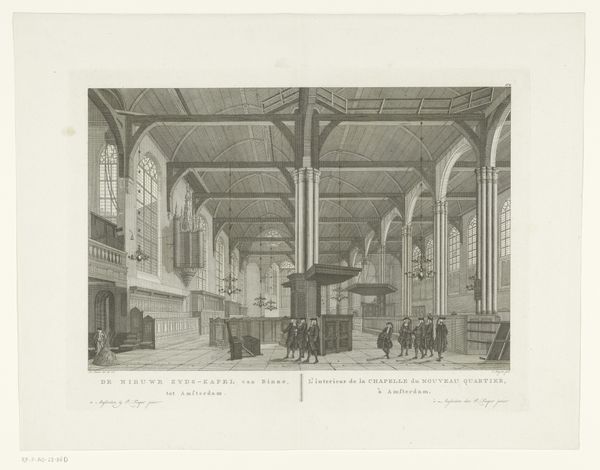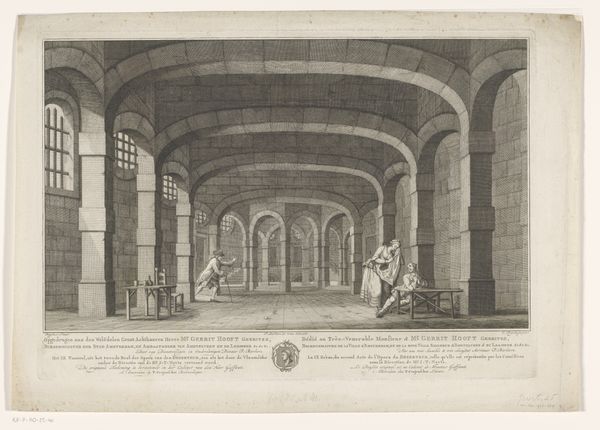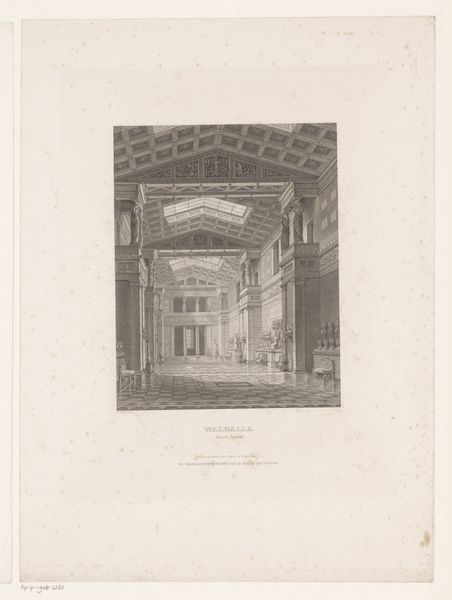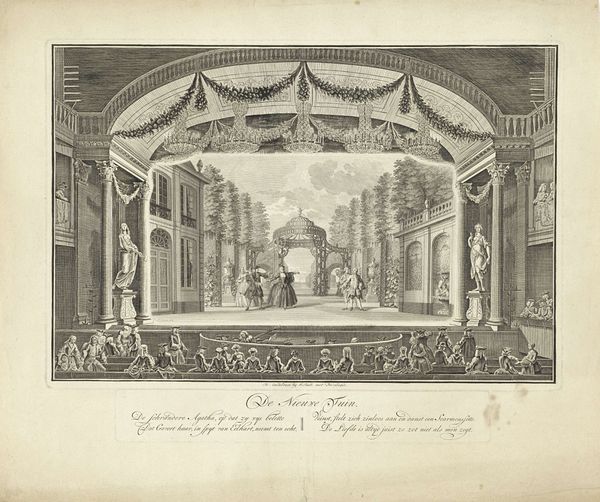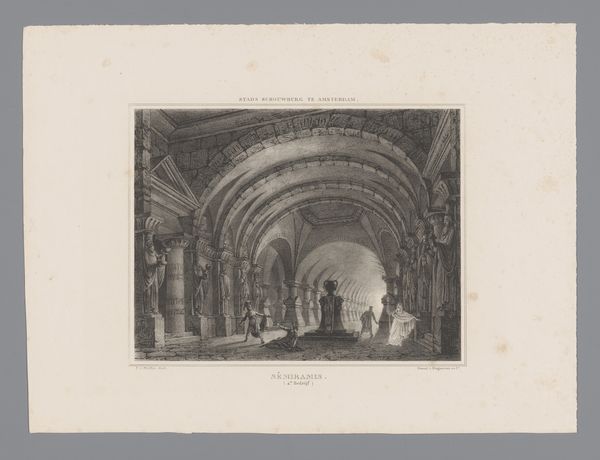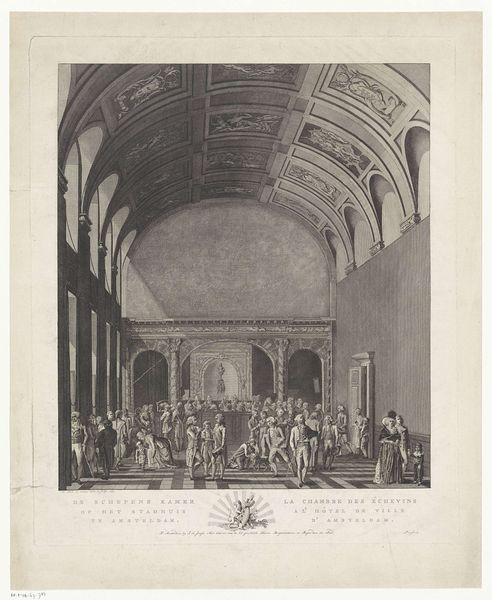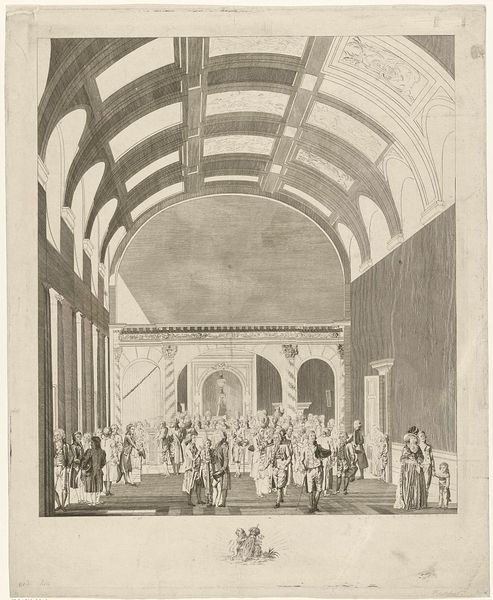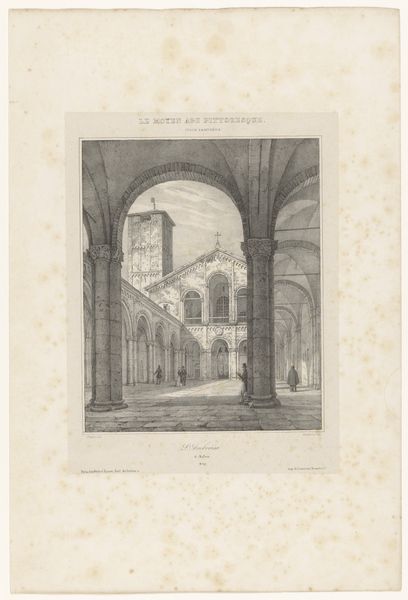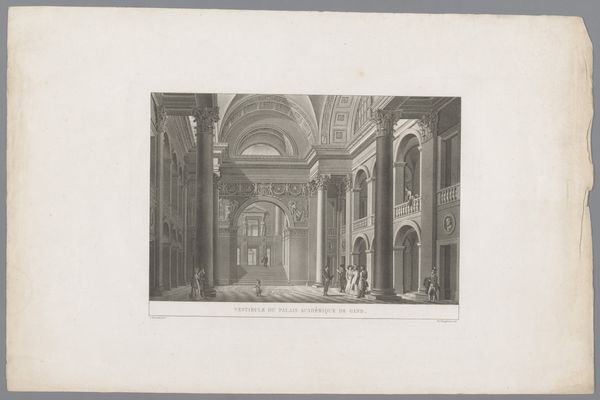
Dimensions: height 338 mm, width 425 mm
Copyright: Rijks Museum: Open Domain
Editor: This is "Schouwburg met toneeldecor: De Kerker," or "Theater with a stage design: The Dungeon," an engraving by Cornelis Brouwer from 1794, now at the Rijksmuseum. The composition is dominated by a somber, arched prison interior. What do you see in this piece that I might be missing? Curator: This image invites us to consider the power structures inherent in performance, doesn’t it? Here, a stage set of a dungeon becomes a space to examine themes of confinement and resistance, especially during a time of revolution. Editor: Revolution? I wouldn't have made that connection just from looking at it. Curator: The date is key. 1794 situates this work in the midst of radical social and political upheaval. The “dungeon” could represent the oppressive forces being challenged. The performance becomes a mirror reflecting the anxieties and aspirations of the period. Editor: So, the staging itself becomes a kind of political statement? Curator: Precisely. Consider who had access to theater, to these narratives. It was often the privileged classes. This scene, therefore, engages with ideas about power, justice, and who gets to tell those stories. Look at the figures – are they prisoners or actors? Are their struggles real or performative? It makes us think about how the powerful may become prisoners of their own systems. Editor: That really reframes how I see it. It's not just a stage set, it’s a commentary on social justice. Curator: Absolutely! The artist prompts us to think critically about the role of art in reflecting and challenging social norms, even within entertainment. Editor: I'll never look at baroque the same way again! Thanks for that insight. Curator: It's all about context, and I'm so glad we could view the intersection between theatre, society and social justice together today.
Comments
No comments
Be the first to comment and join the conversation on the ultimate creative platform.
